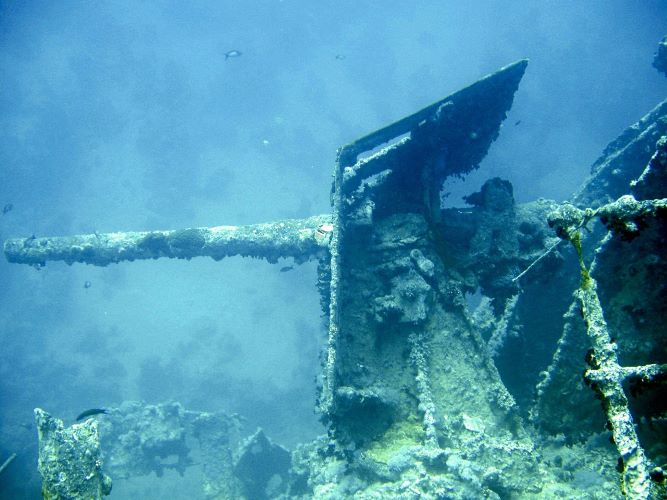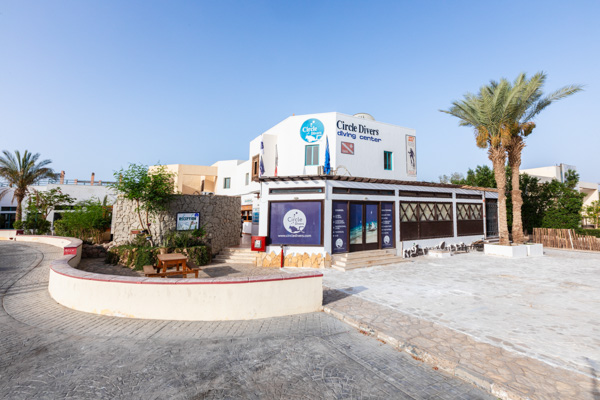SS Thistlegorm: A Time Capsule Beneath the Red Sea

Beneath the azure waters of the Red Sea near Sharm el Sheikh lies a maritime time capsule, the SS Thistlegorm. This World War II shipwreck has become one of the most iconic and visited dive sites in the world, offering divers a rare opportunity to explore a sunken relic that tells the tale of a bygone era. Constanlty rated in the top 10 dive sites in the world, Circle Divers is pleased to offer our divers trips to dive the Thistlegorm when diving in Sharm. Just ask at the front counter for more details of the next planned trip. The SS Thistlegorm was a British armed Merchant Navy ship built in 1940 during the height of World War II. Its primary purpose was to transport essential war supplies, including ammunition, vehicles, and other goods, from the United Kingdom to the British Eighth Army in North Africa. The ship's final voyage, laden with a diverse cargo, ended abruptly on the night of October 5, 1941. The Thistlegorm, en route to the Egyptian port of Alexandria, fell victim to a German bombing raid off the coast of the Sinai Peninsula. Two bombs struck the ship, causing a massive explosion that tore the vessel apart. The wreckage sank quickly, taking with it not only the cargo meant for the war effort but also the lives of nine crew members. For decades, the Thistlegorm remained hidden beneath the waves, its exact location lost to time. It wasn't until 1956 that the wreck was rediscovered by the legendary explorer and underwater pioneer, Jacques Cousteau. Since then, the SS Thistlegorm has become one of the most sought-after dive sites, attracting divers from around the globe eager to explore its historical remnants. Diving the Thistlegorm is like stepping back in time. The wreck lies at a depth of 30 meters, and its intact cargo holds provide a fascinating glimpse into the past. The cargo includes military vehicles such as motorcycles, trucks, and even a full-sized steam locomotive. These artifacts, frozen in time beneath the sea, create an eerie but captivating atmosphere. Over the years, the SS Thistlegorm has transformed into an artificial reef, attracting a diverse array of marine life. The wreck's steel structure and nooks and crannies provide shelter for a variety of fish species, including barracuda, snapper, and angelfish. Coral growth has adorned the ship, adding a surreal beauty to the wreckage. Divers can witness the delicate balance between the remnants of human history and the thriving marine ecosystem that has reclaimed this underwater relic. Diving the SS Thistlegorm is not just a journey into history; it's an adventure into the depths of the Red Sea. The wreck is suitable for divers of various skill levels, with portions of the ship accessible to those with basic certifications. The dive usually starts by descending onto the deck, where the remains of anti-aircraft guns and a vast cargo of motorcycles are visible. As divers explore the cargo holds, they encounter a time-frozen collection of war supplies. Trucks and jeeps are stacked upon each other, their tires now replaced by coral formations. The steam locomotive in the lower hold is a highlight, its boiler and wheels surrounded by schools of curious fish. The eerie yet mesmerizing image of the cargo holds filled with wartime relics is a poignant reminder of the ship's dramatic history. While the SS Thistlegorm is a captivating dive site, it faces challenges related to conservation and preservation. The wreck's popularity has led to increased diver traffic, and the delicate balance between exploration and preservation is a constant concern. Efforts to mitigate the impact of diving, such as mooring buoys and strict guidelines, are in place to ensure that future generations can also experience the magic of the Thistlegorm. Advanced Certification: While parts of the SS Thistlegorm are accessible to divers with basic certifications, an advanced open water certification is recommended for a more comprehensive exploration, including the deeper sections of the wreck. Respect and Caution: Divers should exercise caution and respect the historical significance of the site. Touching or removing artifacts is strictly prohibited to preserve the integrity of the wreck. The SS Thistlegorm is not just a shipwreck; it's a living testament to a pivotal moment in history. As divers descend into the depths to explore its cargo holds and corridors, they become time travelers, witnessing the remnants of a bygone era frozen in the embrace of the Red Sea. The Thistlegorm's allure lies not only in its historical significance but also in its transformation into an underwater ecosystem, where marine life and human history coexist in a delicate dance beneath the waves. Diving the SS Thistlegorm is more than an adventure; it's a journey into the heart of the past, where the echoes of wartime stories and the vibrant pulse of marine life merge in a symphony of underwater exploration.The History of SS Thistlegorm
Rediscovery and Diving the Thistlegorm
Marine Life and Ecosystem
Diving Experience and Highlights
Preservation Efforts and Challenges
Tips for Divers


